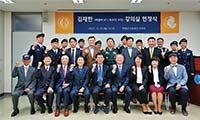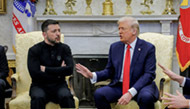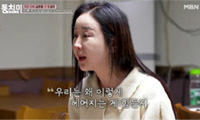A City’s Grim Guidebook for Terror, Disease and Panic
planning now for an
apocalypse later.
Major disasters like terrorist attacks and mass epidemics raise confounding issues for rescuers, doctors and government officials. They also pose bewildering legal questions, including some that may be painful to consider, like how the courts would decide who gets life-saving medicine if there are more victims than supplies.
But courts, like fire departments and homicide detectives, exist in part for gruesome what-ifs. So in February, an official state legal manual was published in New York to serve as a guide for judges and lawyers who could face grim questions in a terrorist attack, radiological or chemical contamination or an epidemic.
Quarantines. The closing of businesses. Mass evacuations. The slaughter of infected animals and the seizing of property. When laws can be suspended and whether infectious people can be isolated or subjected to mandatory treatment. It is all there, in dry legal language, in the manual, published by the state court system and the bar association.
The most startling legal realities are handled with lawyerly understatement. It notes that the government has broad power to declare a state of emergency. “Once having done so,” it continues, “local authorities may establish curfews, quarantine wide areas, close businesses, restrict public assemblies and, under certain circumstances, suspend local ordinances.”
Ronald P. Younkins, the chief of operations for the state court system, said the book’s preparation was similar to other steps the New York courts had taken to plan for emergencies, including stockpiling respirators and latex gloves. Mr. Younkins said it is intended to give judges and lawyers a place to turn in an emergency because the maze of state and federal laws can be difficult to decipher. For judges, the manual may well be their only refresher on the case of Mary Mallon, “Typhoid Mary,” who was isolated on an East River island from 1915 until her death in 1938.
“It is a very grim read,” Mr. Younkins said. “This is for potentially very grim situations in which difficult decisions have to be made.”
Published with the disarmingly bland title “New York State Public Health Legal Manual,” the doomsday book does not proclaim new law but, rather, describes existing law and gives lawyers and judges ways of analyzing any number of situations.
The suspension of laws, it says, is subject to constitutional rights. But then it adds, “This should not prove to be an obstacle, because federal and state constitutional restraints permit expeditious actions in emergency situations.”
When there is not enough medicine for everyone in an emergency, it notes, there is no clear legal guidepost. It suggests legal decisions would most likely involve an analysis that “balances the obligation to save the greatest number of lives against the obligation to care for each single patient,” perhaps giving preference to those with the best chance to survive. It points out, though, that elderly and disabled people might have a legal claim if they are discriminated against at such moments of crisis.
In separate forewords, the state’s chief judge, Jonathan Lippman, and the bar association’s president, Stephen P. Younger, say public-health threats are more apparent than ever, so the legal questions ought to be considered now, not during an emergency.
After mentioning that houses or businesses can be commandeered to shelter victims or serve as medical dispensaries, it continues that “violations of individual property rights, if actionable, would generally be sorted out after the need for such actions has ended.” In its matter-of-fact way, it conjures an image of the courts muddling through in an apocalyptic city. But it makes clear that it is in just such circumstances that it may be more important than ever for the courts to remain open to grapple with the legal questions created by the emergency itself.
Without mentioning that judges and other court officials themselves may be among the dead or injured, the manual says that when there is a shortage of court personnel, administrators can take any number of steps to keep the courts operating. It says they can hold multiple proceedings before a single judge, change rules of procedure and give priority to cases arising out of the emergency.
And it provides chilling instructions on how to proceed with cases in the midst of outbreaks of contagious disease. The stockpiled gloves and respirators “already available at many courthouses,” it says, may be necessary.
In Brooklyn one day recently, the administrative judge of the criminal courts, Barry Kamins, listened as parts of the manual were read to him, including the section about everyone wearing masks in the courtroom. “I’m trying to imagine several people in a courtroom wearing that,” Justice Kamins said. “It’s hard to put yourself in that situation.”
But, he said, the city’s courts have already been through a lot, including the aftermath of the September 11 attacks. Swine flu brought respirators to some courtrooms, as people worried about infection. Defendants who bite and scratch sometimes arrive in court in chains and are forced to wear gloves. “It’s almost surreal, but you just go forward,” Justice Kamins said, which is how he said judges would most likely respond if the scene in the courts were even more surreal.
By WILLIAM GLABERSON
스마터리빙
more [ 건강]
[ 건강]이제 혈관 건강도 챙기자!
[현대해운]우리 눈에 보이지 않기 때문에 혈관 건강을 챙기는 것은 결코 쉽지 않은데요. 여러분은 혈관 건강을 유지하기 위해 어떤 노력을 하시나요?
 [ 건강]
[ 건강]내 몸이 건강해지는 과일궁합
 [ 라이프]
[ 라이프]벌레야 물럿거라! 천연 해충제 만들기
 [ 건강]
[ 건강]혈압 낮추는데 좋은 식품
[현대해운]혈관 건강은 주로 노화가 진행되면서 지켜야 할 문제라고 인식되어 왔습니다. 최근 생활 패턴과 식생활의 변화로 혈관의 노화 진행이 빨라지고
사람·사람들
more많이 본 기사
- 법무부 “엡스타인 자료 100만건 추가돼…공개에 수주 소요”
- 김정은, 8천700t급 핵잠 건조 지도… “韓핵잠, 반드시 대응할 위협”
- 경찰, ‘통일교 로비 키맨’ UPF 前회장 13시간 피의자 조사
- 조지아 역주행 사고, 한인 남편 이어 임신 아내·태아 사망
- 성탄 전날 LA 일대 폭풍우…돌발 홍수·산사태 경보
- [‘로드 레이지’ 한인 피살 현장 상세 상황] 끼어들기 시비가 비극으로… 차에서 내려 “쏴봐라” 언쟁
- 美당국자 “백악관, 우선은 제재통한 베네수 경제압박에 초점”
- 테슬라 ‘비상시 차문 안열리는’ 문제로 당국 추가 조사
- 뉴욕증시, 성탄절 앞두고 상승 마감…S&P500 연일 사상최고치
- “트럼프특사, 벨라루스 정상과의 협상수단으로 살빼는약 동원”
- 엔비디아, ‘추론 강화 AI칩’ 스타트업과 기술 라이선스 계약
- “청소년 성별확정치료 중단 안돼”…19개주, 정부 상대 소송
- 시택공항서 “내 이름이 뭔가요” 캠페인...가짜 차량공유 범죄 예방 위해 캠페인 시행키로
- 브라운대 총격범, 대학원 중퇴후 고립된 삶… “유령같은 존재”
- 한인 박찬영씨 총격살해범은 백인 군인...살해범 “박씨 차량이 끼어들어 시비가 붙어 결국 총쐈다”
- 기부 줄이는 미국인들…트럼프·고물가·탈종교 3중 한파
- 팀 쿡 애플 CEO, 나이키 주식 43억원어치 매입…나이키 주가↑
- 美, 물류거점창고에 불체자 8만명 수용 추진… ‘아마존택배’ 방식
- [성탄절 문 여는 곳은] 코스코·월마트 닫고… CVS는 영업
- 대통령 상징 ‘봉황기’ 29일 0시 용산서 내리고 청와대에 걸린다
- 트럼프 행정부, H-1B비자 추첨 내년 2월 폐지…고임금 인력 우대
- 함소원, 진화와 한 지붕 이혼 부부..결국 눈물 “헤어지는 게 힘들어”
- 박나래, 과거 또 파묘..이번엔 ‘나혼산’ 18L 식용유 장면
- [이민 단속] 여권 소지 시민권자들 … 2
- ‘박지윤과 이혼’ 최동석, 두 자녀와 데이트.. “기적 같은 일”
- 온라인쇼핑과 반품, 그리고 그 이후 1
- 뉴욕시 전철 2인1조 운행 물건너 가
- 트럼프, ‘나비넥타이’ 매고 연말 대중문화 시상식 일부 진행
- MC몽, 차가원 회장 충격 불륜 부인.. “채무 120억 당연히 이행”
- ‘파워볼’ 열풍 계속… 오늘 잭팟상금 17억 달러
- 제니, ‘MMA’서 불태웠다..천만 조회수 앞두고 “평생 간직할 것”
- [이민 단속] 새해에도 더 공격적 단속
- [부 고] 박종군 전 뉴욕청과협회장 별세
- 가난해서 흙 팠는데… ‘다이아’ 캤다
- 조지호 “尹 월담 의원 체포지시” 재증언…尹측 “사실과 달라”
- 역주행 승용차 덮쳐 한인 등 2명 사망
- ‘월드컵 우승 가능성’ 한국 34위·일본 16위, 韓 A조에서도 ‘세 번째’
- 트럼프의 새 독트린 “미국을 다시 왜소하게”
- 오레곤 한국전쟁기념재단 새 이사장에 박성민씨...새 부이사장에 김성윤씨…회장 및 사무총장은 유임키로
- 워싱턴주 시애틀산악회 유철웅 회장 연임...2015ㆍ2016ㆍ2025년에 이어 4번째 회장직 맡기로
- 시애틀지역 사상최대 마약 적발...킹카운티 셰리프국, 메스암페타민 214파운드 압수
- ‘소득세’없었던 워싱턴주에 소득세?...밥 퍼거슨 워싱턴주지사, ‘백만장자 소득세’ 공개 지지
- “최고의 산타” 아이유, ‘21세기 대군부인’ 현장에 통 큰 선물 쐈다
- 이대우 뉴저지한인회장, “적자 개인적으로 전액변제”
- “ATM기 사용하기 겁나네”
- ‘이정후 위엄’ SF CEO+사장+단장+감독→韓 총출동! 황재균·윌리 아다메스까지 선행 참여
- 뉴저지한국학교 종강식^ 학습발표회
- 뉴욕시 최저임금 인상⋯ 1월1일부터 17달러
- [미국은 지금] MAGA의 분열, 예… 1
- 먹는 비만약 경쟁 치열 ‘위고비’ 미국 판매승인
1/5지식톡

-
 미 육군 사관학교 West Poin…
0
미 육군 사관학교 West Poin…
0https://youtu.be/SxD8cEhNV6Q연락처:wpkapca@gmail.comJohn Choi: 714-716-6414West Point 합격증을 받으셨나요?미 육군사관학교 West Point 학부모 모…
-
 ☝️해외에서도 가능한 한국어 선생님…
0
☝️해외에서도 가능한 한국어 선생님…
0이 영상 하나면 충분합니다!♥️상담신청문의♥️☝️ 문의 폭주로 '선착순 상담'만 진행합니다.☎️ : 02-6213-9094✨카카오톡ID : @GOODEDU77 (@골뱅이 꼭 붙여주셔야합니다…
-
 테슬라 자동차 시트커버 장착
0
테슬라 자동차 시트커버 장착
0테슬라 시트커버, 사놓고 아직 못 씌우셨죠?장착이 생각보다 쉽지 않습니다.20년 경력 전문가에게 맡기세요 — 깔끔하고 딱 맞게 장착해드립니다!장착비용:앞좌석: $40뒷좌석: $60앞·뒷좌석 …
-
 식당용 부탄가스
0
식당용 부탄가스
0식당용 부탄가스 홀세일 합니다 로스앤젤레스 다운타운 픽업 가능 안녕 하세요?강아지 & 고양이 모든 애완동물 / 반려동물 식품 & 모든 애완동물/반려동물 관련 제품들 전문적으로 홀세일/취급하는 회사 입니다 100% …
-
 ACSL 국제 컴퓨터 과학 대회, …
0
ACSL 국제 컴퓨터 과학 대회, …
0웹사이트 : www.eduspot.co.kr 카카오톡 상담하기 : https://pf.kakao.com/_BEQWxb블로그 : https://blog.naver.com/eduspotmain안녕하세요, 에듀스팟입니다…
케이타운 1번가
오피니언
 정숙희 논설위원
정숙희 논설위원온라인쇼핑과 반품, 그리고 그 이후
 파리드 자카리아 / 워싱턴포스트 칼럼니스트 / CNN ‘GPS’ 호스트
파리드 자카리아 / 워싱턴포스트 칼럼니스트 / CNN ‘GPS’ 호스트 트럼프의 새 독트린 “미국을 다시 왜소하게”
 김동찬 시민참여센터 대표
김동찬 시민참여센터 대표 [미국은 지금] MAGA의 분열, 예견된 균열의 시작
 임지영 (주)즐거운 예감 한점 갤러리 대표
임지영 (주)즐거운 예감 한점 갤러리 대표 [수요 에세이] 삶이라는 배를 타고
 이영창 / 한국일보 기자
이영창 / 한국일보 기자[지평선] ‘인간GPT’ 환각의 부작용
 조환동 / 편집기획국장·경제부장
조환동 / 편집기획국장·경제부장 AI로 가속화되는 노동시장 개편
 민경훈 논설위원
민경훈 논설위원‘크리스마스 캐롤’과 산타 클로스
 정재민 KAIST 문술미래전략 대학원 교수
정재민 KAIST 문술미래전략 대학원 교수 [정재민의 미디어풍경] 적과의 동침, 협력하며 경쟁하기
 김영화 수필가
김영화 수필가 [화요칼럼] 단호박의 온기
1/3지사별 뉴스

“온 세상에 평화를⋯”
숨가쁘게 달려온 2025년을 이제 1주일 남짓 남긴 채 크리스마스 이브를 맞는다. 다사다난했던 한 해를 되돌아보며 마무리하는 연말 시즌과 크리…
H-1B비자 고임금·경력자에 우선권

‘올해는 ICE 이민자 체포 광풍의 해’
올 한해동안 버지니아와 메릴랜드, DC 등에서 연방 이민당국에 체포된 사람이 1만명이 훌쩍 넘는 것으로 조사됐다. 또 미 전국적으로는 22만명…
“ATM기 사용하기 겁나네”

연말 ‘로드레이지’ 비극… 한인 총격 피살
연말을 맞아 도로 위에서 순간적으로 벌어진 운전 중 시비가 40대 한인 가장의 총격 피살 비극으로 이어졌다. 워싱턴주 레이시 경찰국과 서스턴 …
[‘로드 레이지’ 한인 피살 현장 상세 상황] 끼어들기 시비가 비극으로… 차에서 내려 “쏴봐라” 언쟁

오늘 하루 이 창 열지 않음 닫기 





















































.png)


댓글 안에 당신의 성숙함도 담아 주세요.
'오늘의 한마디'는 기사에 대하여 자신의 생각을 말하고 남의 생각을 들으며 서로 다양한 의견을 나누는 공간입니다. 그러나 간혹 불건전한 내용을 올리시는 분들이 계셔서 건전한 인터넷문화 정착을 위해 아래와 같은 운영원칙을 적용합니다.
자체 모니터링을 통해 아래에 해당하는 내용이 포함된 댓글이 발견되면 예고없이 삭제 조치를 하겠습니다.
불건전한 댓글을 올리거나, 이름에 비속어 및 상대방의 불쾌감을 주는 단어를 사용, 유명인 또는 특정 일반인을 사칭하는 경우 이용에 대한 차단 제재를 받을 수 있습니다. 차단될 경우, 일주일간 댓글을 달수 없게 됩니다.
명예훼손, 개인정보 유출, 욕설 등 법률에 위반되는 댓글은 관계 법령에 의거 민형사상 처벌을 받을 수 있으니 이용에 주의를 부탁드립니다.
Close
x